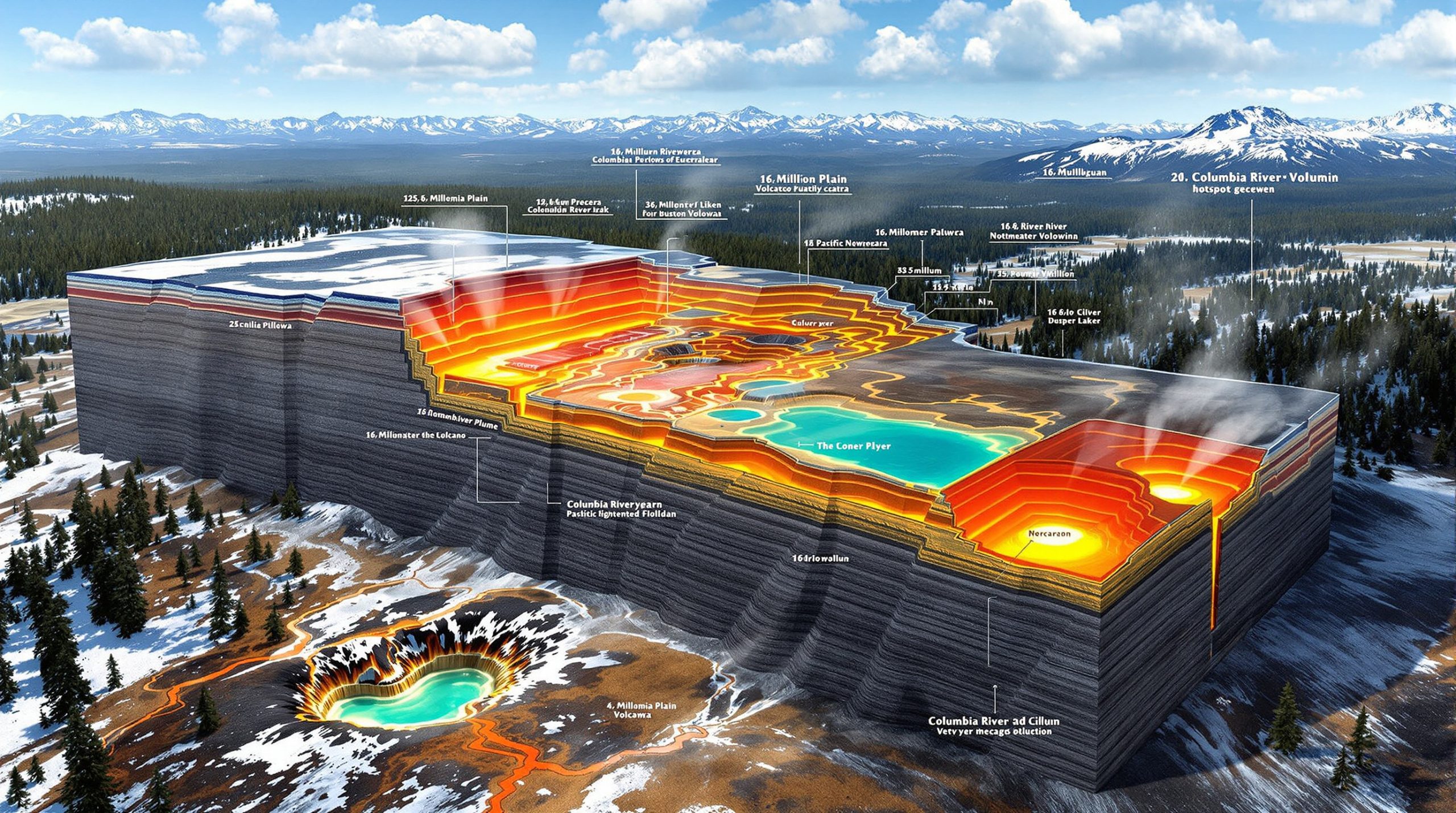Why Is the Mining Industry Facing Consolidation Pressure?
The global mining sector is navigating through challenging times, prompting a wave of consolidation activities that are reshaping the industry landscape. Several interrelated factors are driving this trend, with significant implications for industry players and investors alike.
Global Manufacturing Slowdown Impact
Manufacturing deceleration worldwide has created a ripple effect throughout the resource sector, particularly affecting demand for industrial metals. The most significant factor in this equation is China's changing economic profile, which has profound implications for global mining companies.
China, long the world's workshop and primary consumer of raw materials, is experiencing a structural shift in its growth model. This transition has led to waning demand for industrial metals, creating market uncertainty that permeates the entire mining ecosystem. What makes this situation particularly challenging is that no other country or region has emerged to fill the consumption void left by China's reduced appetite for resources.
Adding complexity to an already difficult situation, US-China trade tensions have further complicated market dynamics. These geopolitical factors have disrupted traditional supply chains and introduced additional layers of uncertainty for mining companies attempting to forecast demand and plan operations accordingly.
Financial Realities for Major Mining Companies
The financial picture for major mining conglomerates reveals the depth of the industry's challenges. Mining sector M&A value decreased dramatically by 27% to $15 billion in Q1 2025 compared to the same period in 2024, reflecting hesitation to pursue large-scale transactions in an uncertain environment.
Despite maintaining robust balance sheets, industry giants like BHP and Rio Tinto face stagnant earnings growth prospects. This financial plateau is pushing these companies to prioritize value creation through alternative means, with achieving strength through scale emerging as a primary strategic consideration.
Another concerning reality is the declining ore grades at existing operations. As mines mature, the quality of accessible ore typically decreases, forcing companies into strategic reassessments of their portfolios and operating models. This geological challenge is prompting miners to seek consolidation opportunities that can help maintain production volumes and control unit costs.
What Types of Consolidation Are Emerging in the Mining Sector?
As the mining sector consolidation amid slowdown adjusts to new market realities, distinct consolidation patterns are emerging, with companies favoring certain approaches over others based on regulatory considerations and risk profiles.
Joint Ventures as the Preferred Strategy
Industry analysts have observed a marked increase in discussions about partnering, joint ventures, and selective asset sales rather than full-scale mergers or acquisitions. This trend represents a pragmatic adaptation to the current regulatory and market environment.
A prime example is BHP's recent establishment of the Vicuña joint venture with Lundin Mining. This partnership now controls two significant copper projects: the Filo project in Argentina and the Josemaria project in Chile. The structure allows both companies to share risks while pooling expertise and capital.
Joint ventures have gained popularity largely because they offer simplified regulatory approval processes compared to full mergers. This streamlined pathway to completion has become increasingly valuable as antitrust scrutiny intensifies across global markets.
Asset Sales and Portfolio Optimization
Companies are increasingly divesting non-core assets to focus on strategic priorities, allowing them to concentrate capital and management attention on their most promising operations. This trend represents a more surgical approach to portfolio management than wholesale mergers.
Barrick Gold's strategic asset sale amid consolidation pressure exemplifies this trend. By pursuing specific assets rather than entire companies, miners can reduce portfolio risks while enhancing core operations without triggering the same level of regulatory concerns.
The preference for smaller, targeted deals is largely driven by their higher probability of completion. These transactions typically face simpler regulatory requirements and generate less political opposition than industry-transforming mergers.
Capital Allocation Shifts
A notable trend among major mining companies is the preference for increasing shareholder returns over growth investments in uncertain market conditions. Significant capital is being directed toward dividends and share buybacks, reflecting a more conservative approach to capital deployment.
Despite this caution, strategic investments continue in select areas. BHP, for instance, plans to invest $10.8 billion (A$17.4 billion) in Chile over the next decade, with a primary focus on extending the life and enhancing the productivity of existing operations like the massive Escondida copper mine rather than pursuing new greenfield developments.
This balanced approach to capital allocation represents an attempt to maintain investor confidence while positioning for future growth in targeted commodities and regions.
What Are the Key Barriers to Full-Scale Mining Mergers?
Despite the strategic rationale for consolidation, several significant barriers stand in the way of large-scale mining mergers, forcing companies to pursue alternative approaches to growth and optimization.
Regulatory Challenges
The likelihood of regulatory rejection for major mining mergers has increased substantially in recent years. Antitrust concerns have become particularly acute, limiting consolidation opportunities among diversified miners who already hold significant market share in key commodities.
While smaller deals face fewer regulatory hurdles, truly transformative industry mergers now confront formidable obstacles from competition authorities in multiple jurisdictions. Additionally, the geographical concentration of mining assets can trigger national security reviews, adding another layer of complexity to potential transactions.
The regulatory landscape has evolved to favor smaller, more focused transactions that don't fundamentally alter market structures or create dominant players in specific commodity markets.
Cost and Valuation Concerns
The high costs associated with major acquisitions have diminished their appeal, particularly in uncertain market conditions. Premium expectations from target companies often create substantial valuation gaps that are difficult to bridge, especially when future commodity price trajectories remain unclear.
Integration challenges and operational disruptions following acquisitions add to the total costs beyond the initial purchase price. The risk of overpaying during uncertain market conditions has made boards and management teams increasingly cautious about pursuing transformative deals.
Historical examples of value-destructive mining mergers continue to cast a long shadow over the industry, making stakeholders wary of repeating past mistakes.
Historical Merger Timing Patterns
Industry veterans have observed distinct patterns in mining merger activity related to commodity price cycles. According to Christel Bories, chairman of Eramet: "Merger discussions often occur either at the very top of the cycle, because mining companies have a lot of money, or at the very bottom of the cycle, because there is a need to find ways to create value."
The current market position, which sits between clear cycles, creates strategic uncertainty for potential acquirers. Companies are consequently cautious about timing major transactions, preferring to wait for clearer signals about future market directions before committing significant capital to acquisitions.
This cyclical hesitation has contributed to the preference for joint ventures and asset-specific transactions that require less capital commitment and carry lower risks.
How Have Recent Major Acquisition Attempts Shaped the Industry?
Failed acquisition attempts have had profound effects on industry strategies and approaches to growth, with lessons learned informing current consolidation trends.
High-Profile Failed Acquisitions
BHP's $49 billion hostile bid for Anglo American put the entire industry on notice about the challenges of pursuing transformative mergers in the current regulatory environment. Similarly, Glencore's $23 billion (SFr19.69 billion) attempt to acquire Teck Resources was rejected, highlighting the difficulties in securing shareholder support for major transactions.
These high-profile failures have led to strategic reassessments across the industry, with companies increasingly recognizing the challenges associated with complete takeovers of large, diversified miners. The experiences have made boards more receptive to alternative consolidation strategies that offer similar benefits with fewer regulatory and execution risks.
The shadow cast by these unsuccessful bids continues to influence strategic thinking throughout the sector, pushing companies toward more targeted, asset-specific approaches.
Lessons Learned from Failed Bids
The mining industry has drawn several important conclusions from recent failed acquisition attempts. Perhaps most significantly, full-scale acquisitions now face substantial regulatory and stakeholder resistance, particularly when they involve companies with dominant positions in specific commodities.
Asset-specific deals have demonstrated higher completion rates than company-wide takeovers, encouraging miners to pursue more focused transactions. Strategic partnerships now offer many of the benefits of full mergers—including operational synergies and scale advantages—without the complications associated with complete integration.
Targeted approaches to specific commodities, particularly those central to the energy transition like copper and lithium, are showing greater success than attempts to acquire diversified mining companies with exposure to multiple resource categories.
What Is Driving Future Consolidation Opportunities?
Despite current challenges, several factors are creating a foundation for future consolidation activities in the mining sector, with specific commodities and strategic considerations at the forefront.
Copper Demand Forecasts
Predictions of surging copper demand related to global electrification efforts are making M&A in this segment more palatable to company boards. Power grid replacements and upgrades worldwide will drive significant copper consumption in the coming decades, creating a structural demand growth story that transcends current economic uncertainties.
The growth of e-mobility, including electric vehicles and associated charging infrastructure, creates long-term demand certainty for copper producers. Companies are increasingly positioning themselves to capture this anticipated market growth through strategic acquisitions and partnerships focused on copper assets.
This commodity-specific optimism exists despite broader market uncertainties, creating particular consolidation opportunities in the copper segment of the mining industry.
Strategic Resource Positioning
Mining companies are increasingly focusing on critical minerals essential for the energy transition, including copper, lithium, nickel, and cobalt. Consolidation allows access to reserves without the delays associated with exploration and development of new mining projects, which can take decades to bring online.
Scale advantages help address rising production costs and declining ore grades, which are industry-wide challenges. Combined technical expertise can unlock previously uneconomic resources through innovative extraction and processing technologies.
This strategic positioning for future resource demand is driving targeted consolidation efforts even as broader market conditions remain challenging.
How Are Mining Companies Adapting Their Investment Strategies?
In response to changing market dynamics, mining companies are evolving their investment approaches, balancing between different capital allocation priorities.
Balance Sheet Strength Utilization
Major miners maintain strong balance sheets despite market uncertainties, providing them with strategic flexibility. Companies are leveraging this financial strength for selective investments in high-potential assets and technologies while maintaining significant shareholder returns despite growth challenges.
This balanced approach to capital deployment allows miners to prepare for future opportunities while satisfying investor expectations for current returns. The focus on selective capital deployment prioritizes highest-return opportunities rather than growth for growth's sake.
The industry's financial conservatism reflects lessons learned from previous cycles, when debt-fueled expansions left companies vulnerable during subsequent downturns.
Operational Efficiency Focus
Mining companies are increasingly investing in existing operations to improve productivity and extend mine life rather than pursuing greenfield developments. Digital transformation in mining for enhanced operational efficiency is receiving significant attention and investment.
Partnerships to share infrastructure and technical expertise are becoming more common, allowing companies to achieve efficiency gains without full-scale mergers. Portfolio optimization efforts continue to concentrate resources on highest-margin commodities, with divestments of non-core assets funding investments in strategic priorities.
This operational focus represents a pragmatic adaptation to an environment where organic growth opportunities face increasing geological, regulatory, and cost challenges.
What Does the Future Hold for Mining Sector Consolidation?
Looking ahead, the mining industry's consolidation trajectory appears to favor certain approaches over others, with important implications for investors and stakeholders.
Expected Consolidation Patterns
The industry is likely to maintain its preference for joint ventures over full-scale mergers, as these structures offer many of the benefits of consolidation with fewer regulatory and execution risks. Asset-specific transactions rather than company-wide acquisitions will probably dominate the M&A landscape in the near term.
Strategic partnerships focused on specific commodities or regions will continue to gain traction as a means of achieving scale benefits without triggering antitrust concerns. The overall pattern suggests gradual industry restructuring rather than transformative mergers that fundamentally alter competitive dynamics.
This evolutionary rather than revolutionary approach to consolidation reflects the industry's adaptation to a more challenging regulatory and market environment.
Critical Success Factors
Regulatory navigation capabilities will increasingly determine transaction success, with companies that can effectively manage multiple jurisdictional reviews gaining advantage in pursuing growth through acquisition. The focus on value creation rather than size for size's sake has become a distinguishing characteristic of successful consolidation strategies.
Strategic alignment with energy transition and future demand patterns will guide investment decisions, with particular emphasis on copper and other critical minerals. Timing relative to commodity price cycles will continue to influence outcomes, with companies that can act counter-cyclically potentially capturing the greatest value.
Northern Star's landmark $5 billion acquisition demonstrates how major mining consolidation can still occur despite broader industry hesitation. Furthermore, expert insights on mining feasibility and economic viability are becoming increasingly crucial for companies considering consolidation strategies in this environment.
The mining sector consolidation amid slowdown will likely remain selective and strategic rather than comprehensive, reflecting a mature sector's adaptation to a complex global operating environment. Additionally, as highlighted in a recent Reuters analysis on the acceleration of mining consolidation, this trend is expected to intensify as Chinese demand growth continues to slow.
FAQ: Mining Industry Consolidation
Why are mining companies pursuing joint ventures instead of full mergers?
Joint ventures offer simplified regulatory approval processes, reduced financial commitment, and focused operational benefits while avoiding the complexities and risks associated with full-scale mergers and acquisitions.
How has Chinese demand affected mining industry consolidation?
Slowing Chinese demand growth has created market uncertainty, pushing mining companies to seek scale advantages through consolidation to maintain profitability and manage costs in a more challenging market environment.
What role does copper play in mining consolidation strategies?
Copper's critical importance to electrification and renewable energy has made copper-focused assets particularly attractive for consolidation, with companies positioning to capture anticipated demand growth from power grid upgrades and electric vehicle adoption.
How are regulatory concerns influencing mining company strategies?
Regulatory scrutiny has pushed companies toward smaller, asset-specific deals and joint ventures rather than transformative mergers, as these smaller transactions face fewer approval hurdles and competition concerns.
What financial strategies are mining companies employing during this slowdown?
Companies are balancing between strategic investments in existing operations, selective growth opportunities, and returning capital to shareholders through dividends and share buybacks while maintaining strong balance sheets for future opportunities. Moreover, insights from the Mineral Resources AGM on governance challenges provide valuable perspective on how mining companies are navigating these complex financial decisions in the current environment.
Want to Capitalise on the Next Major Mining Discovery?
Discover significant ASX mining opportunities before the market with Discovery Alert's proprietary Discovery IQ model, which transforms complex mineral data into actionable investment insights. Explore why major mineral discoveries can lead to exceptional returns by visiting Discovery Alert's dedicated discoveries page and position yourself ahead of the market.




